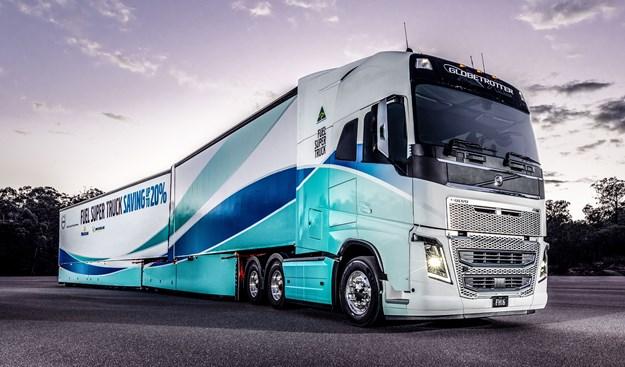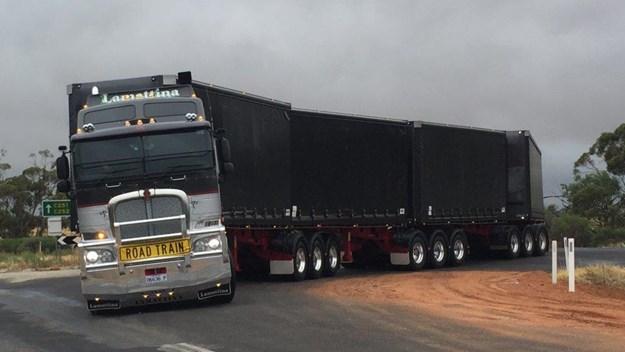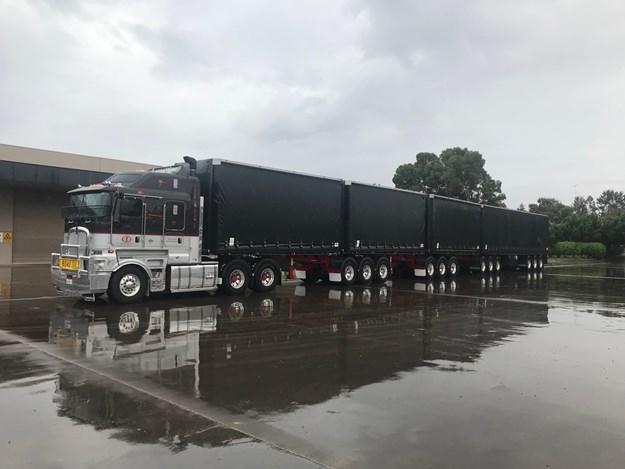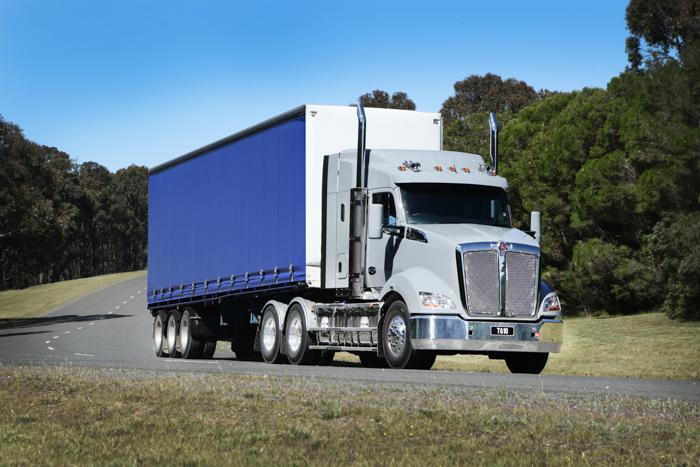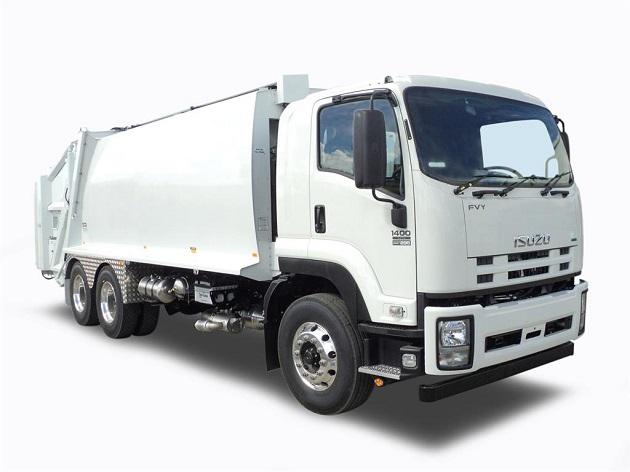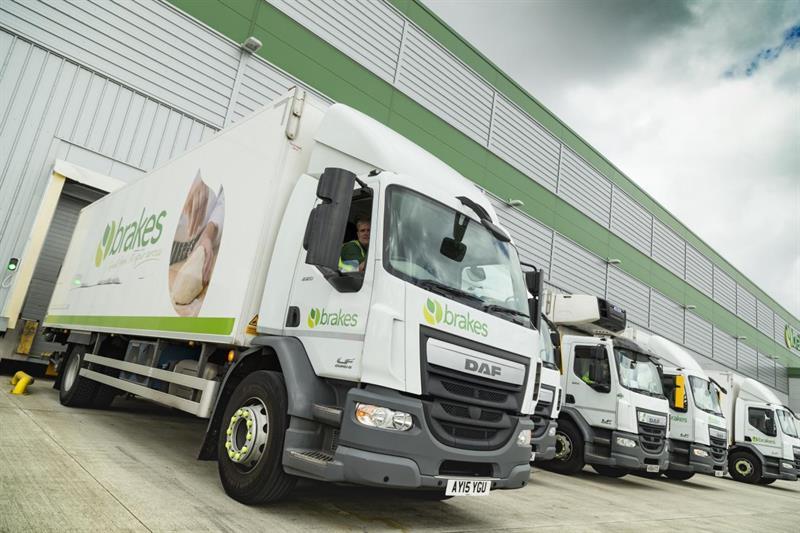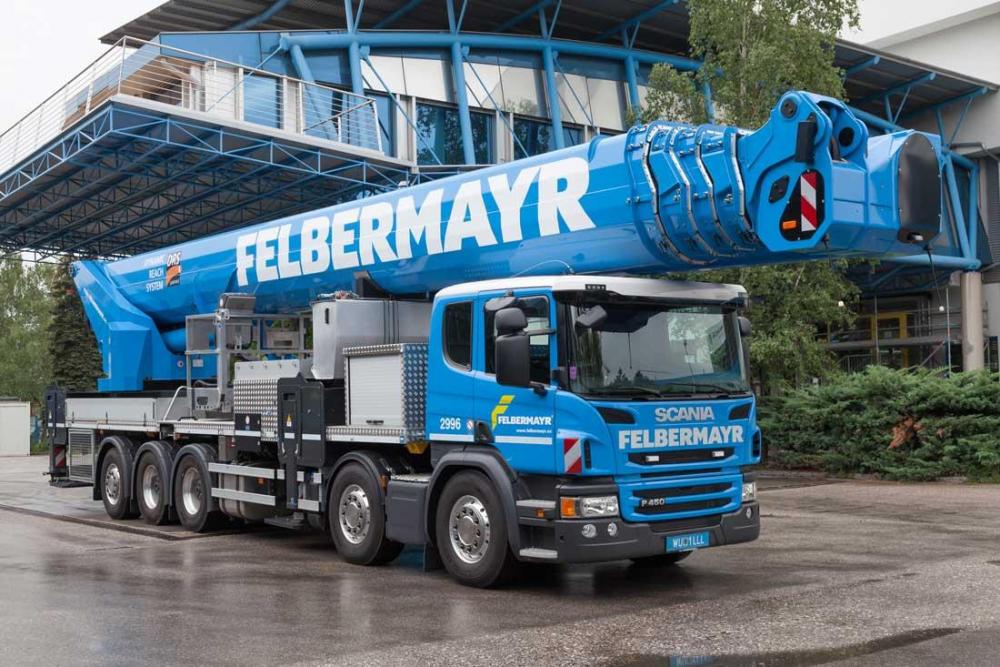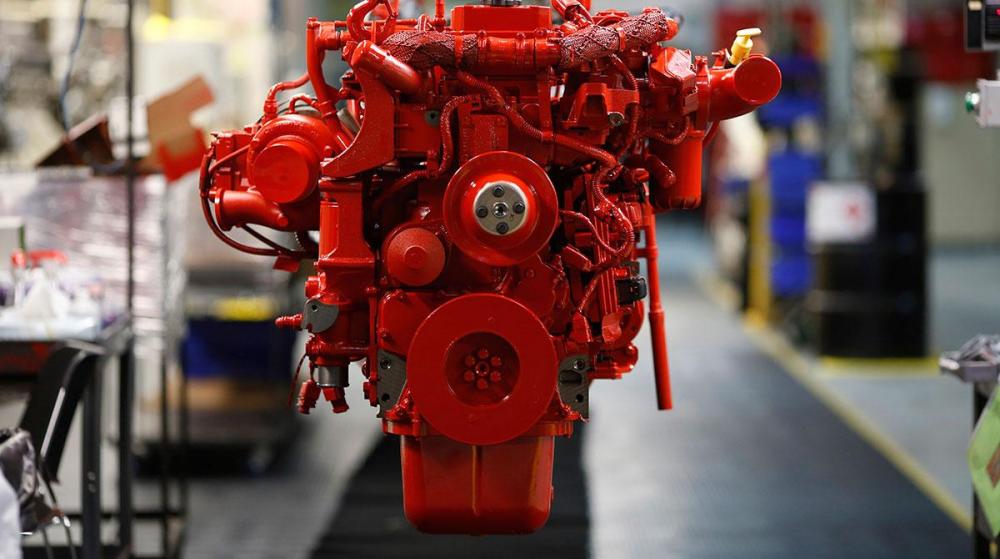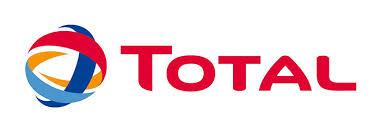
kscarbel2
Moderator-
Posts
18,854 -
Joined
-
Days Won
114
Content Type
Profiles
Forums
Gallery
Events
Blogs
BMT Wiki
Collections
Store
Everything posted by kscarbel2
-
Australia's first 'Fuel Super Truck' delivers massive gain
kscarbel2 posted a topic in Trucking News
Owner-Driver / August 8, 2018 Volvo Trucks Australia Vice President Sales Clive Jones announced the Fuel Super Truck’s results today, proudly claiming a staggering 20 per cent real-world fuel efficiency gain. "The Volvo Fuel Super Truck is more than just a concept. It is a real-world truck specially engineered for Australian conditions with a fuel efficiency-optimised driveline and streamlined aerodynamics," Jones says. "The truck is designed to run on the least amount of diesel possible, without compromising productivity or performance. With fuel accounting for one-third of operator costs, the industry is looking for answers to the problem of how to maximise fuel efficiency while still getting the job done. "The good news for owners and operators looking to reduce fuel consumption is that the majority of features in the Volvo Fuel Super Truck are available for ordering now. Volvo Trucks Australia is committed to working with every customer in order to find the best specification for their unique operational conditions." Australian trials of the concept put the trucks through rigorous testing and the Fuel Super Truck, which uses a slightly de-tuned version of the 16-litre FH16 powertrain, delivered a fuel efficiency gain of 20 per cent over the base line FH16. The concept truck was designed in-house at the Wacol Facility in Queensland by Volvo Group Trucks Technology (GTT) engineers, with support from the Volvo team in Sweden. It was built around a FH16 and while other concept trucks have been based on single trailer configurations, this is the first B-double concept truck in the world. "Nearly two years in the making, this truck is a testament to Australian ingenuity and engineering skill, along with the great benefits gained from the partnership of Swedish and local engineering teams," Jones says. "In addition to engineering developments in the driveline and aerodynamics, other concept trucks have been single trailer vehicles, whereas the Volvo Fuel Super Truck is first B-double concept truck in the world. "We look forward to introducing the Volvo Fuel Super truck to customers around Australia over the coming weeks and months, and to updating the industry on further exciting developments we are making in the fuel efficiency space." . -
The first new promotional videos from Mack Australia in no less than 6 months......half a year.
-
Owner-Driver / August 2, 2018 One of the most exciting new combinations to hit the streets in recent years has just been approved and is ready to be put to work - the big B-quad The PBS B-quad with K200 up front can be seen in the drone footage below undertaking testing, and is set to cart carrots for iconic Rocky Lamattina & Sons. The trailer set was manufactured by Southern Cross Trailers and is a combination they’re proud to call an on-road Australian first. "It was something that we proposed after getting a better understanding of Lamattina’s trailer requirements," Says Southern Cross Trailers Business Development Engineer, Phill Ramfos. "They let us build without boundaries, the only boundary we had was the network they were carting produce on." Extensive testing led Southern Cross Trailers to the verdict this combination offers benefits far beyond just payload. Ramfos explains that it offers unique weight distribution across axles and by virtue of its design, tracks like a B-double. "Talking to the owners they’re pretty impressed with the performance of the combination and its manoeuvrability, we think it’d just about get through a Maccas drive-through!" he jokes. "It’s not just unique in its configuration, its unique in how it distributes the mass across the axle loads. "It’s critical for asphalt, bridges, for a lot of things and that’s what we aimed to do – design something outside the box and offer a benefit for industry, community and the customer." Rocky Lamattina and Sons General Manager Angelo Lamattina says the decision to build a B-quad came down to both manoeuvrability and getting the weights right on the axle groups. "We were looking at another A-double but it’s difficult getting the weights right on the axle groups, so going with a B-quad we were able to move the turntable back and forward until we got the load where we wanted it," Lamattina says. The company transports carrots between their three farms in Victoria and Queensland and Lamattina says the B-quad is already approved on the route they travel, as well as offering high levels of handling and safety. "I spoke to Phill at Southern Cross Trailers and we came up with a design for the B-quad that kept it under 36.5-metres long, because the road train route is here already," he says. "At the end of the day, if we felt that increasing the productivity of the vehicle was going to create an issue with safety we wouldn’t even head in that direction. "This has more wheels on the ground and with the extra trailers it drives nice and flat. When you go around a corner it’s also a lot more stable." National Heavy Vehicle Regulator (NHVR) chief engineer Les Bruzsa, also known as the ‘Quadfather’ in transport circles, says this B-quad offers significant productivity gains over a traditional Type 1 Roadtrain. "This is the first B-quad that’s not a mining vehicle, set to be operating from next week," Bruzsa says. "The General Mass Limit (GML) is 103 tonnes and the Higher Mass Limit (HML) is 105.5 tonnes – so if you look at a Type 1 Roadtrain, this one can provide more than 20% productivity improvement." In terms of performance Bruzsa says the B-quad sets a high benchmark within the PBS Scheme, both for low and high-speed handling. "The B-quad is an absolutely fantastic combination and as far as dynamic stability it’s a benchmark vehicle," he says. "This vehicle has really excellent characteristics, it’s extremely stable and the high-speed dynamics are fantastic. "It’s extremely stable at the rear, the rear axles are tracking with the prime mover. "It’s also got disc brakes, electronic stability control, so all the latest technology fitted." .
-
Diesel News Australia / August 2018 A report from ANZ analysts [The Australia and New Zealand Banking Group Ltd] sees Aussie trucking on the up with positive figures reflecting an upturn in the fortunes of the industry. The ANZ research found ‘a noteworthy’ increase in revenue and margins for the trucking businesses surveyed and this is leading to increased capital expenditure. The ANZ team looked at 35 trucking operations. These had a combined revenue of $11 billion and are said to represent 27 per cent of the trucking industry in Australia. Their findings were also backed up by the latest truck sales figures released this week by the Truck Industry Council. The latest truck sales results tell us 23,314 new trucks have been sold in 2018 so far and this is 3,587 up on the same figure for 2017. The figures in the heavy duty market are even more buoyant with 7908 heavy duty sales representing a 31.28 per cent increase in sales over last year’s total in the first seven months of 6039. In its finding the survey reckons revenue growth for the top 25 per cent of businesses surveyed have experiences around six per cent growth in the last financial year, compared with two per cent the year before. The median rise in revenues tipped the balance at two per cent this year. The increased capital expenditure is good news for Australia. However, we still lag behind the rest of the world. The rising capital expenditure last year was three per cent of sales in Australia, but that figure was seven per cent internationally. Two indicators of performance in the last financial year illustrate a trend in the trucking industry. Margins in the general freight area have trended downwards for the past five years and even specialised freight margins are only holding their own. Tighter margins squeeze the smaller trucking operations first and this is reflected in the declining number of trucking businesses, from 44,000 in 2008 to to 40,000 now and down to a predicted 37,000 by 2024. At the same time employment in the industry is predicted to continue to increase from 150,000 now to 160,000 by 2024. Although this survey doesn’t give us the complete picture, the number of businesses involved should be able to show us how the overall industry is trending. .
-
Prime Mover magazine / August 9, 2018 Isuzu Australia (IAL) is exhibiting its latest waste management innovation at the Australasian Waste & Recycling Expo (AWRE), which will be held at the International Convention Centre in Sydney, 29-30 August 2018. According to IAL, AWRE comprises a speaker program and speaker showcase, bringing together the "latest thinking around waste and recycling, and the products that are employed in the waste collection, processing recovery and recycling processes". IAL will present a FVY developed by waste equipement experts, Superior-PAK, in the AWRESOME product showcase. The FVY, rated at 24,000kg [52,911lb] Gross Vehicle Mass (GVM) and 36,000kg [79,366lb] Gross Combination Mass (GCM), is reportedly an ideal platform for waste applications with its "brawny" turbo-charged and intercooled diesel engine rated at 221 kw [296hp] at 2,400 RPM and 981 Nm at 1,450 RPM. The emission control system comprises cooled EGR with Exhaust Diesel Particulate Diffuser and is ADR 80/03 (Euro V) and EEV compliant. "Offsetting the harsh stop-start nature of waste applications is the Allison 3500 automatic transmission and Hendrickson HAS460 rear airbag suspension both contributing to smooth and predictable operational behaviour," IAL said in a statement. "In addition to the Allison auto and Hendrickson rear airbag suspension, the Isuzu FVY benefits from industry-standard components, such as Meritor axles with cross-locks, Meritor ‘Q-Plus brakes with ABS, and in the cab, the ISRI 6860 air-suspended seat." “We’re pleased to be supporting AWRE once again in 2018,” said IAL National Truck Sales Manager, Les Spaltman. “One key to Isuzu’s success lies in developing reliable and efficient trucks that can be adapted to broad range of applications and specifications including waste and recycling, and events like this help get the product in front of the right people. “We’re continually striving to improve our offering and partnering and mixing with like-minded business and industry leaders ensures that we are exposed to the latest thinking and ideas. “Isuzu and AWRE go back a long way and we want to continue to offer our services and support in their endeavours to facilitate better waste and recycling management," he said. In other news, Perth-based science education centre, Scitech, relies on Isuzu when touring Western Australia where it provides interactive exhibits, workshops and shows to regional and remote communities. .
-
UD Trucks adds heavy duty Quester (GVW40t) to Middle East line-up, aiming at expanding heavy truck market. UD Trucks Press Release / August 8, 2018 · With the variation demanded in the Middle East introduced, UD Trucks will expand a heavy-duty market · Robust, operationally-tested build withstands harsh driving conditions · Positioned for growing construction-related demand UD Trucks is adding a new 6x4 (rear-wheel two axis drive) variant “GVW40t” to its heavy duty, growth market oriented Quester range in the Middle East. With the new variant the company meets the precise needs of customers in a wide range of activities, and foresees increased sales. Quester is UD Trucks’ first heavy duty truck developed specifically for growth markets. UD Trucks has deployed its long experience and expertise in heavy duty trucks to develop the Quester concept of meeting market needs in all countries. Launched in the Middle East in 2016, Quester is praised for its highly durable chassis and its flexibility, together with customer sales support thanks to UD Trucks’ network. The Quester making its debut now is the 6x4 (rear-wheel two axis drive) variant “GVW40t”. Its payload is larger than existing ones to meet the particular need of customers in the Middle East. Furthermore its flexibility allows a wide variety of truck bodies — not only a dump truck but also a concrete mixer, tanker and other variations are possible. It is the product of long and deep experience meeting customer needs in each country, combining Japanese quality and skills with Volvo Group's world-class technology. The market for heavy duty trucks in the Middle East is stable thanks to infrastructure development and preparations for the Expo 2020 Dubai stimulating demand in the construction sector. With its new variant (single o, UD Trucks, which has been active in the Middle East since the beginning of the 1970s, is well-positioned to meet customer needs particularly in the construction-related sector. Commenting on the new Quester variant, Mourad Hedna, Managing Director UD Trucks MEENA said: “The Middle East conditions are tough, with varied terrain, high temperatures and payloads. To ensure the new variant meet the needs of our customers, we conducted repeated road tests in real conditions. We are confident that the now complete range of Quester with its proven fuel-efficient engines and UD Trucks quality - will set new standards of efficiency in the Middle East and other growth markets”.
-
-
The all-new "Kuzer" from UD Trucks - Made to Deliver Extra
kscarbel2 posted a topic in Trucking News
UD Trucks Press Release / August 1, 2018 Tight manoeuvring in tough situations. Squeezing through rush hour to make your next delivery. Is this your daily routine in a nutshell? Then step inside the Kuzer. The truck that fits your life. Light-medium duty just got real. It’s the new Kuzer. Made to Deliver Extra. . -
Volkswagen Group owned MAN Trucks exits Indian market
kscarbel2 replied to kscarbel2's topic in Trucking News
Here's the latest domestic market competition. They've come a long ways. It's cheap where it doesn't matter, and rugged where it counts. . -
Brakes halves NOx emissions with Shell GTL-fuelled DAF fleet
kscarbel2 replied to kscarbel2's topic in Trucking News
-
Transport Engineer / August 7, 2018 Foodservice business Brakes is reporting a 47% reduction in NOx emissions since switching its Park Royal, London-based fleet of DAF LF trucks to Shell Gas-to-Liquid (GTL) fuel. Results of the nine-month trial with the 50 LF 230 refrigerated vehicles have been confirmed in independent tests at the Millbrook facility, in Bedfordshire. Brakes also reports quieter running and odour-free refuelling at the pump. Importantly for Brakes’ urban operations, the use of Shell GTL Fuel – supplied in the UK by Certas Energy – means the requirement for periodic static regeneration of the DPF has been virtually eliminated, adding to fuel efficiency. Crucially, the fuel requires no vehicle modifications or changes to service intervals. “The trial of Shell GTL Fuel at our Park Royal depot has been running really well,” confirms Steve Webster, Brakes’ head of indirect goods and services procurement. “The feedback from the drivers has been overwhelmingly positive – the vehicles are running more quietly and we’ve seen a substantial reduction in the need to clean the particulate filters.” He adds: “The evidence has come back clearly showing that running Shell GTL fuel in a city centre has a big impact on NOx emissions – indeed, our own test saw a 47% reduction compared to running on diesel. “We have not waited for future technology either as there is no requirement to convert the vehicle.” DAF’s entire range is certified for use of GTL fuels, as well as for HVO (hydrotreated vegetable oil) which can deliver an additional well-to-wheel carbon saving of over 90%. .
-
Scania Group Press Release / August 6, 2018 The sky’s the limit for Felbermayr. Felbermayr, the international specialist in abnormal transport and lifting operations, is reaching further with the help of Scania. The Austrian company successfully uses the staggering Ruthmann Sky performance platform, mounted on a standard Scania 5-axle P 450 truck, to obtain a working height of 90 metres and an outstanding lateral reach of up to 42 metres. Lean approval process For these applications, special vehicles are commonly employed but the advantages of this combination are obvious: the Scania P 450 is a road-approved truck already so it does not need a separate approval process, and Scania offers European-wide vehicle services and support. “We already have about 2,600 work platforms in our fleet, but we were still looking for a solution with a higher lateral reach,” says Thomas Daxelmüller, Head of Felbermayr Operations in Lanzendorf, Austria. “With the Ruthmann telescopic boom, it is not only possible to achieve better rigidity, but to also save weight.” He adds, “This is the first time that a platform with a similar performance has been mounted on a vehicle with a 48-tonne maximum gross weight. With Scania, we have found the right partner as it is the only manufacturer of a five-axle chassis delivered directly from the factory.” Praise for the Scania P 450 With its extraordinary reach, the truck-mounted platform has been used in various assignments over the past few weeks, ranging from maintenance and repair of wind turbines to servicing petrochemical plants. Felbermayr driver Stephan Lux is already enthusiastic and says that “the first impressions of the vehicle are absolutely positive, and the driving characteristics of the Scania P 450 are also great.” .
-
Kenworth Truck Co. Press Release / August 3, 2018 .
-
UPI / August 7, 2018 Navistar Defense has received a $29.6 million contract from the U.S. Army for rocket-propelled grenade netting kits. The deal, announced Monday by the Department of Defense, comes under a three-year contract set to run through August 2021. Work will be performed in Illinois, and Army fiscal 2018 through 2021 capital funds will be used for the program. Rocket propelled grenades are a series of shoulder-launched anti-armor, anti-fortification and anti-personnel weapons that have been widely used by insurgent forces in Iraq, Afghanistan and other combat zones. They are standard weapons in many countries across the world. RPG netting is a metal cage bolted onto vehicles that are meant to cause the warhead to explode before it impacts directly on the vehicle's armor. Anti-tank rounds are designed to blow a hole in the armor and send fragmentation called spalling into the crew compartment, starting fires and injuring or killing the vehicle's occupants. .
-
Volkswagen Group owned MAN Trucks exits Indian market
kscarbel2 replied to kscarbel2's topic in Trucking News
The truck MAN has been building in India is a nice unit. It is older technology to realize a lower selling point, the demand of the Indian market. However, it's not a cheap truck. The cab is the proven last generation L2000, and the drivetrain and chassis are all first class (CNHTC aka. SinoTruk has produced this cab under license as well). . . -
Scania Group Press Release / August 7, 2018 It was the greatest party for many years at Scania’s head office in Latin America. The official debut of Scania’s new truck generation in the region gathered more than 4,000 dancing employees at São Bernardo do Campo, Brazil. The Latin American launches of Scania’s new truck generation in October will end the series of world launches. The highly acclaimed and prized trucks will then be available throughout the world. Running up to the Latin American launches two of the new trucks will carry out a spectacular journey through four countries – Brazil, Argentina, Chile and Peru. Moment of pride The start of this journey was turned into a mighty street parade at Scania’s head office and main factory in Latin America. All 4,000 employees in Sâo Bernardo do Campo took part in the event with great pride and team spirit. One of the trucks will make stops at dealerships in Latin America for events with customers, employees, brand fans and journalists. The second vehicle will visit Latin American examples of transformation to a more sustainable world, resulting in a five-chapter web series starting 29 October, the official launch date in the region. Driving the shift “We have already taken on the challenge of driving the shift toward more sustainable transport. But we know that changing the world is a journey, and we can’t do it alone. Through “The Journey”, we will demonstrate transformational approaches, or better yet, give voices and faces to the people who are in some way pursuing solutions,” says Christopher Podgorski, President and CEO of Scania Latin America. Following the regional launch, each country will host local events during the first half of 2019. “The response to the new generation has been extremely positive, including several awards and a significant increase in sales in Europe,” Podgorski says. “We are confident that Latin America will be no different, because our customers need cost-effective and sustainable solutions and they have the ideal partner in Scania.” .
-
Transport Topics / August 8, 2018 Cummins Pulls Ahead of Detroit Diesel to Lead in Powerplants of 10-Plus Liters Independent engine maker Cummins Inc. supplied the most diesel engines used in Class 8 trucks in North America in the first half of 2018, as it did a year earlier, although its overall market share dipped, WardsAuto.com reported. Cummins barely pulled ahead of Detroit Diesel Corp. to lead in engines 10 liters and over and dominated in engines under 10 liters. A Cummins executive pointed to three engines — the X15, X12 and a 9-liter — as driving the company’s success and underscored the work by its employees to keep up with truck makers’ near-record levels of production. The company introduced the X15 engine in July 2016. The X12 became available this year. The L9 was introduced in 2017. “We have had to have not only a good product, but deliver on increasing demand for that product in a pretty challenging ramp-up,” Rob Neitzke, Cummins’ executive director for North America truck OEM business, told Transport Topics. One industry analyst forecast in July that Class 8 production in 2018 could become the fifth highest ever if it stays on track. “Our plants are doing a great job of working with truck makers to make sure Cummins isn’t the reason they can’t build a truck, isn’t the bottleneck,” Neitzke said. The total number of Class 8 diesel engines installed in the first half of 2018 rose 25.7% year-over-year to 141,474. Cummins supplied 52,486, or 37% of them. In the first half of 2017, there were 112,511 engines, and Cummins earned a leading 37.3% share with 42,062. The figures come from a Ward’s report on North American factory sales of heavy-duty trucks, including their engines, released July 31. The report breaks Class 8 engines into two segments, with 10 liters as the dividing line. Turning to engines 10 liters and over, Cummins notched a leading 32.3% share, or 41,741 out of 129,100. Detroit, a unit of Daimler Trucks North America, was right behind with a 31.3% share, or 40,473 engines. A year earlier, Detroit led in the heavier category with a 34.4% share, while Cummins earned a 32.3% share in that period, too. Paccar Inc.’s truck brands — Kenworth Truck Co. and Peterbilt Motors Co. — together accounted for 66.3% of Cummins engines in the heavier class, up from 66.1% a year earlier. International Truck used the second-highest number of heavier Cummins engines — 11,483, up from 8,284 a year earlier. At the same time, all truck makers increased the overall number of proprietary engines with one exception. Mercedes-Benz engines plummeted compared with a year earlier — to 94 from 2,493, due to the near disappearance of its lighter Class 8 engines. Mercedes-Benz is an in-house brand of DTNA, which did not respond to a request for comment. Paccar used 16,894 of its MX engines compared with 12,968 a year earlier — supplying them almost equally in its Kenworth and Peterbilt brands. International used 4,418 heavier engines of its own compared with 1,886 a year earlier. International is a unit of Navistar Corp. Navistar Chairman and CEO Troy Clarke said during the company’s latest earnings conference call that Navistar’s 15-liter engine has about an 18% share of the 15-liter segment. Its new 13-liter engine, introduced in 2017, is in the range of 8% in its segment, he said. “Probably at the rate we’re going, this time next year we’ll be, hopefully, equivalent to where the 15-liter is,” Clarke said. The Ward’s report showed Cummins as the undisputed leader in Class 8 engines under 10 liters. Cummins earned an 86.8% share in the category with 10,745 engines out of 12,374. Freightliner, also a unit of DTNA, used the most from Cummins in the lighter category, 7,021, up from a leading 6,982 a year earlier. International was next highest with 2,517 engines, up from 2,046. International saw sales of its engines less than 10 liters fall to 174 compared with 832 in the 2017 period as the OEM began to shut down production of its N9 engine. Paccar’s lighter engines increased to 1,012 from 700 in the 2017 period. Paccar makes the PX9 engine in that category. Meanwhile, analysts said questions over Cummins’ growth potential, plus concerns over the cost of its massive emissions-related recall campaigns of 732,000 light-, medium- and heavy-duty trucks, helped to drive Cummins’ stock down to $141.61 on Aug. 3 compared with $192.50 on Jan. 26 — the year-to-date high. Cummins believes its stock in undervalued. “Our view is the earnings of the company are incredibly strong. Our incremental margins are good. And we don’t think we’re at the peak. We think we’ve got quite a bit more room to run,” Cummins Chairman and CEO Tom Linebarger said in a recent earnings conference call. On Aug. 8, Cummins announced it would repurchase $500 million of common stock, noting the move is consistent with the company’s plans to return 75% of operating cash flow to shareholders in 2018. .
-
Air Liquide generates, stores and transports liquid hydrogen all the time.
-
Total to provide credit support for US LNG truck purchases
kscarbel2 posted a topic in Trucking News
S&P Global / May 10, 2018 French oil major Total has taken a further step downstream in the natural gas supply chain, with a plan to facilitate the purchase of gas-fueled trucks in the United States. The aim is to make the upfront capital cost of LNG trucks equal to an equivalent diesel truck. The company also intends to guarantee a discounted natural gas fuel price to diesel. The move is part of a pattern amongst international oil companies to invest in all parts of the gas value chain and stimulate demand for the fuel in new markets such as land and maritime transport. The company announced Thursday that it has entered into a strategic agreement with Clean Energy Fuels Corp. Total will take 25% equity in the US company, buying 50.8 million shares for $83.4 million, making it CEF's largest stockholder, subject to shareholder approval. CEF plans to launch a leasing program to allow early switchover for trucking firms from diesel to gas. Total intends to provide up to $100 million of credit support for the program, which is slated to launch in the third quarter. "Launching the financing program should expedite the adoption of natural gas as the most environmentally friendly fuel for the trucking industry," CEO and President of Clean Energy Andrew J. Littlefair said. Cost Volatility The adoption of gas-fueled trucks, either CNG or LNG, implies potentially significant oil demand displacement and a commensurate increase in natural gas consumption as trucks have high mileage and low fuel efficiency, which means they use much more fuel than passenger vehicles. However, the number of natural gas vehicles in the US has remained static over the last two years at 160,000, representing just 0.06% of the total US vehicle fleet, according to NGV Global data. Natural gas-fueled trucks typically cost around $100,000 compared with $70,000 for diesel trucks, while the fuel savings depend on the relative cost of diesel and natural gas. "Total believes there is a strong development opportunity in the natural gas for transportation market in particular in the United States which benefits from unique giant low-cost gas resources," Total CEO Patrick Pouyanne. Diesel prices rise and fall largely in line with the crude oil price, which dropped sharply in the latter half of 2014, but has been rising over the past year, hitting a three and a half year high Wednesday, following US President Donald Trump's decision to withdraw from the Iran nuclear deal. US natural gas prices in contrast have stayed relatively steady and low over the same period on a diesel gallon equivalent basis, despite rising demand, owing to large increases in supply associated with shale oil drilling. CNG has about a 25% the energy density of diesel, while LNG has about 59%. Results vary from study to study, but in general LNG has a higher diesel equivalent fuel economy. This, like fuel costs, is again something of a moving target as both LNG and diesel engine fuel economy is improving. Natural gas trucks tend to be lower maintenance as they are cleaner burning. However, while the cost benefits are mostly a function of the relative price of the alternative fuels, the issue of whether natural gas is a better fuel for the environment than diesel is also more nuanced than might be expected. Natural gas' more complete combustion leads to lower nitrogen oxide and particulate emissions, while diesel engine exhaust was classified by the World Health Organization as long ago as 1998 as "probably carcinogenic to humans". This stance was toughened in 2012, when the WHO concluded there was sufficient evidence that diesel exhaust "is a cause of lung cancer." However, the findings on overall greenhouse gas emissions is different because natural gas - methane - is itself a potent greenhouse gas. The International Council on Clean Transportation in a study from 2015 noted that "recent studies on natural gas supply chain leakage and emissions indicate that even low levels of methane emissions can turn natural gas truck technology from an asset into a liability for the United States' long-term climate mitigation planning." . -
Ford 'evolving' Mulally's One Ford plan with move to 5 modular platforms Michael Martinez, Automotive News / August 8, 2018 DETROIT -- Ford Motor Co. avoided bankruptcy and survived the Great Recession in part because former CEO Alan Mulally's One Ford plan reduced costs and used common global parts. But the company's current leadership says that's no longer enough. Ford is moving beyond what Mulally and his successor, Mark Fields, did as the automaker looks to slash $25.5 billion in costs over the next five years. While One Ford helped whittle the automaker's global architectures from 30 to nine, Ford is now reducing that number even more, transitioning to just five modular vehicle platforms in the coming years. "This is not saying One Ford was wrong. This is building on the strategy of One Ford and evolving from it," Hau Thai-Tang, Ford's head of product development and purchasing, said Wednesday during a presentation to the 2018 J.P. Morgan Auto Conference in New York. While One Ford helped the company achieve global scale, Thai-Tang said it didn't get the desired scale on the regional or local level. Moving to five platforms will help save costs and boost the efficiency of Ford's supply base, he said. Thai-Tang said up to 70 percent of a vehicle's value can be managed through a modular approach. Moving forward, each of the automaker's vehicles will be on one of five platforms: rear-wheel-drive/all-wheel-drive body-on-frame; front-wheel-drive/awd unibody; commercial van unibody; rwd/awd unibody; and a unibody platform for battery-electric vehicles. Ford seeks to save about $7 billion in engineering and product-development costs while reducing by 20 percent the amount of time it takes to bring a vehicle from the sketch board to the showroom. The automaker believes it can make its engineering 20 to 40 percent more efficient through these new processes. Ford is shifting its product portfolio away from most cars and more toward light trucks as it tries to produce the industry's freshest North American lineup by 2020. The automaker has said it will phase out traditional sedans in North America. Thai-Tang said they will be replaced by new vehicles with different body styles in the same entry-level price range. Ford will focus on "bold, emotive designs" that fit its strengths in the pickup, commercial van and utility segments, Thai-Tang said. He added: "We'll reinvest and allocate capital in those areas." .
BigMackTrucks.com
BigMackTrucks.com is a support forum for antique, classic and modern Mack Trucks! The forum is owned and maintained by Watt's Truck Center, Inc. an independent, full service Mack dealer. The forums are not affiliated with Mack Trucks, Inc.
Our Vendors and Advertisers
Thank you for your support!


